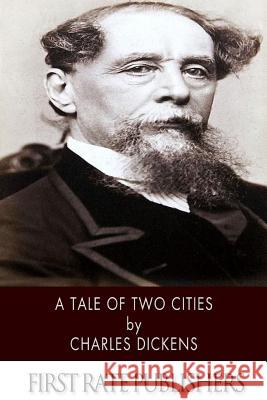A Tale of Two Cities » książka
A Tale of Two Cities
ISBN-13: 9781496164049 / Angielski / Miękka / 2014 / 218 str.
A Tale of Two Cities
ISBN-13: 9781496164049 / Angielski / Miękka / 2014 / 218 str.
(netto: 34,17 VAT: 5%)
Najniższa cena z 30 dni: 35,78
ok. 16-18 dni roboczych
Dostawa w 2026 r.
Darmowa dostawa!
Charles Dickens needs no formal introduction, having been the most popular English writer of the 19th century and still one of the most popular writers in history today. Dickens' upbringing was a mixture of happy times and sad: when he recalled his father being sent to debtor's prison in his memoirs, his tears actually left marks on the page. Nevertheless, Dickens was obsessed with reading, making him a natural journalist by the age of 20, when he began a career in journalism. Along the way, he also began writing his own short stories and materials, often serializing them in monthly installments in publications, a popular method of publishing in the 19th century. Unlike most writers, Dickens would not write an entire story before it began its serialization, allowing him to work on the fly and leave plot lines up in the air with each opportunity. By the time he died at the relatively young age of 58 from a stroke, he was already Europe's most famous writer. His obituary noted that Dickens was a "sympathiser with the poor, the suffering, and the oppressed." Dickens was interred in Westminster Abbey, a rare honor bestowed only among the greatest and most accomplished Britons. Many of Dickens' novels were written with the concept of social reform in mind, and Dickens' work was often praised for its realism, comic genius and unique personalities. At the same time, however, Dickens' ability as a writer was nearly unrivaled, with his ability to write in prose unquestioned and unmatched. His two most famous novels are Great Expectations and A Tale of Two Cities, widely considered two of the West's best classics. A Tale of Two Cities is often considered the greatest historical fictions of all time. Set in London and Paris before and during the French Revolution, the novel depicts the plight of the French peasantry at the hands of the aristocracy in the years leading up to the revolution, followed by the brutality of the Reign of Terror. Dickens juxtaposes French society with London's society during the same period while tracking characters in both cities, including Charles Darnay and Sydney Carton. The classic touches on social justice, romance, morality, good and evil.
Zawartość książki może nie spełniać oczekiwań – reklamacje nie obejmują treści, która mogła nie być redakcyjnie ani merytorycznie opracowana.











